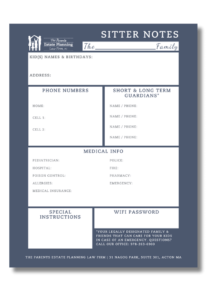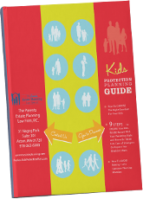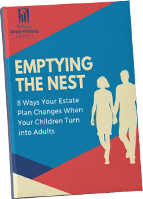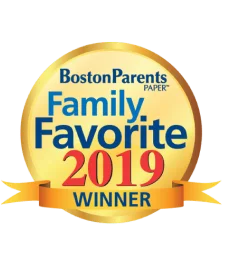
As Mother’s Day draws near, we are reminded of the profound role mothers play in nurturing and safeguarding their children’s futures.
It’s a day to celebrate the joys and responsibilities of motherhood, and what better way to honor this commitment than by focusing on kids protection planning? After all, ensuring the safety and well-being of our children is at the heart of what it means to be a mother.
The Essence of Kids Protection Planning
Motherhood is an intricate tapestry of patience, resilience, and unconditional love. It’s about being prepared for scraped knees and ensuring that, even in your absence, your children are cared for and cherished.
While you diligently protect your children with helmets and knee pads, the ultimate safeguard is a well-thought-out plan for their future.
Kids protection planning goes beyond the immediate physical safety of your children.
It’s about making sure that if something were to happen to you, your children would not only be protected but also raised by people you trust who share your values and understand your parenting philosophies.
It’s about appointing guardians who can step in and provide the love and guidance you desperately wish for your children–even if you aren’t there to give it.
The Role of Guardianship in Kids protection Planning
The thought of not being there to watch your children grow up is a difficult one, but it’s a reality we must face head-on for their benefit. When you designate guardians, you take a proactive step in shaping your children’s futures.
And if you haven’t designated guardians yet, you are not alone. According to Pew research, only 6.1% of parents have nominated even one guardian for their young children in their estate plans. This shows how vastly undereducated the general public is about the importance of establishing guardianship for their children.
Guardianship is about making your preferences both known and legally binding to ensure your children’s upbringing aligns with your hopes and values. When there are no questions about your guardianship choices, you protect your children from further complicating an already distressing and confusing time in their lives.
A Kids Protection Plan® is a comprehensive approach to this aspect of planning. It includes legal documents to name short-term guardians who can be there immediately for your children, preventing them from ever being in the care of strangers. It also involves naming long-term guardians who will raise your children with the same love and care you provide. This plan is a testament to a mother’s foresight and desire to protect her children under any circumstances.
The Comfort of Knowing Your Children Are Protected
There is no greater peace of mind than knowing your children’s futures are secure. A Kids Protection Plan® offers that comfort. It’s a tangible expression of love that organizes your wishes into actionable steps, ensuring that your children will always be in the right hands.
Imagine every one of your children’s caregivers knowing who to call if the unthinkable happened. Even your babysitter would know what to do if the police knocked on your door to deliver terrible news.
You might be thinking that this is great and all, but how do you even approach this scary topic without becoming a puddle? Good new! We have some suggestions.
Approach Kids Protection Planning with Heart
Kids protection planning doesn’t have to be a somber affair. It can and should be approached with the same warmth and care as any family gathering.
Start with a Family Meeting
Consider estate planning as another aspect of family care. Initiate a casual family meeting over brunch or a cozy dinner. Use this time to express your love and the importance of planning for the future. It’s not about dwelling on the negative but ensuring the family’s continued harmony and security.
Do you think your kids may not be ready for this type of conversation? According to the American Academy of Pediatrics and Stanford Medicine, children as young as preschool-age “start to understand that adults fear death”, and “school-aged children have a more realistic understanding of death.” Though children’s understanding of death’s permanence evolves, it is important to talk about it in an age-appropriate manner.
This resource, Talking to children about death: an age-by-age guide, provides some helpful context and direction for these conversations.
Create a Legacy Box
Creating a Legacy Box is a deeply personal and engaging way to involve your family in preserving its history and values for future generations. This activity not only helps in organizing important family heirlooms but also serves as a meaningful way to connect with your children and other family members about your shared past and the values that you cherish. Here’s how to start and enrich this process:
Step 1: Gather and Select Items
Begin by gathering various items that hold sentimental value or represent significant moments in your family’s history. This could include photographs, letters, jewelry, small heirlooms, or even recipes that have been passed down through generations. Encourage family members to contribute items that are meaningful to them, ensuring a diverse collection that truly represents the family’s legacy.
Step 2: Include Multimedia Elements
To capture the essence of family members who may no longer be with you, include multimedia elements such as audio recordings or video clips. These can be old home movies, recordings of family events, or interviews with older relatives. If these are in outdated formats, services like Legacybox can digitize them, ensuring they are preserved and accessible for years to come.
Step 3: Document the Stories Behind the Items
Each item in your Legacy Box should come with a story or description explaining its significance. This might involve writing down who originally owned the item, the context in which it was used, and why it’s important to the family. Consider creating a digital or written document that compiles these stories, which can be stored both physically in the box and digitally for easy sharing and preservation.
Step 4: Personalize with Sensory Memories
Try to include items that evoke the senses, such as a vial of a grandmother’s perfume, a favorite spice used in family recipes, or fabric from a cherished piece of clothing. These sensory items can make the legacy more vivid and emotionally resonant for family members.
Step 5: Secure and Store the Box
Choose a durable, secure container to store your items. This box should protect the contents from environmental damages like moisture or sunlight. While the physical box should be kept in a safe place, consider also keeping digital copies of its contents stored online or in a secure digital format, ensuring that the legacy can withstand any physical deterioration over time.
Step 6: Make It an Ongoing Project
A Legacy Box is not just a one-time project; it should be an evolving part of your family’s story. As new significant events occur or as new important items come into your life, add to the box. Regularly update the stories and information to include new insights or family members.
Step 7: Share and Use the Box
Finally, make sure to share the contents of the Legacy Box with your family, especially younger members. Use it as a tool to tell stories, celebrate heritage, and instill family values. It can be brought out during family gatherings, holidays, or significant family milestones like weddings or graduations, making it a central part of your family’s traditions.
By creating a Legacy Box, you are not only preserving your family’s past but also building a foundation for future generations to understand and appreciate their heritage. This box becomes a treasure trove of your family’s history, packed with emotional and historical wealth that will educate and inspire generations to come.
Shared Family Meals
It takes a village to raise kids, so reinforce your village by sharing meals together. These meals provide time for connection, conversation, and the reinforcement of shared values. In the context of kids protection planning for Mother’s Day, these meals can also serve as an opportunity to discuss and solidify plans for your children‘s future, including the important topic of guardianship.
Facilitating Guardianship Conversations
A relaxed mealtime atmosphere can provide the perfect setting to bring up the subject of guardianship. It’s a time when everyone is gathered together, focused on the well-being of the family, making it natural to discuss who might be best suited to care for your children in your absence. These conversations can be approached with sensitivity and openness, allowing for honest discussions about expectations and willingness to take on such a responsibility.
Tips for Integrating Guardianship into Mealtime Discussions
- Choose the Right Time: While family meals are a great time to discuss important matters, make sure to choose a time when the atmosphere is positive and everyone is feeling relaxed and open to discussion.
- Be Inclusive: Involve all friends and family members in the conversation, including children, as appropriate. This helps everyone understand the importance of the topic and ensures that family values are considered in the decision-making process.
- Share Your Wishes: Use mealtime as an opportunity to share your wishes for your children’s upbringing, including the values and experiences you want them to have. This can help potential guardians understand your parenting philosophy.
- Listen and Observe: Pay attention to how friends and family interact with your children during these meals. Their interactions can provide insight into who might be best suited to act as guardians.
- Follow Up: After initial discussions, follow up with potential guardians privately to delve deeper into the responsibilities and expectations of guardianship.
- Encourage Questions: Allow friends and family to ask questions and express any concerns they may have about guardianship. This can help clear up any uncertainties and ensure that everyone is on the same page.
- Express Gratitude: Show appreciation for your friends and family’s willingness to be part of the conversation and, potentially, part of your children’s future care.
By integrating guardianship discussions into shared family meals, you can ensure that your children will be cared for by individuals who share your values and are committed to their well-being. These meals can reinforce the village that helps raise your children, providing a foundation of support and love that will last a lifetime.
A Mother's Day of Meaning and Assurance
This Mother’s Day, let’s blend the beauty of simple, shared experiences with the substantial gift of a Kids Protection Plan®. By doing so, we honor the essence of motherhood—the nurturing of our children’s daily joy and the safeguarding of their future well-being.
As we plan for the holiday, let’s remember that the best gifts for a mother come from the heart and resonate with her core values. Whether it’s volunteering together, enjoying a family meal, or establishing a legal plan for the children’s care, these gifts transcend the material and become cherished memories and pillars of security.
To all mothers, soon-to-be mothers, and grandmothers, we wish you a Mother’s Day filled with laughter, love, and the comfort of knowing your children will always be in good hands. Happy Mother’s Day.
For those interested in learning more about the Kids Protection Plan® or scheduling a Family Wealth Planning Session, please contact The Parents Estate Planning Law Firm at (978) 263-6900 and mention this article for a special offer.
Let this Mother’s Day be the start of a tradition that not only celebrates mothers but also fortifies the family with care and foresight.













